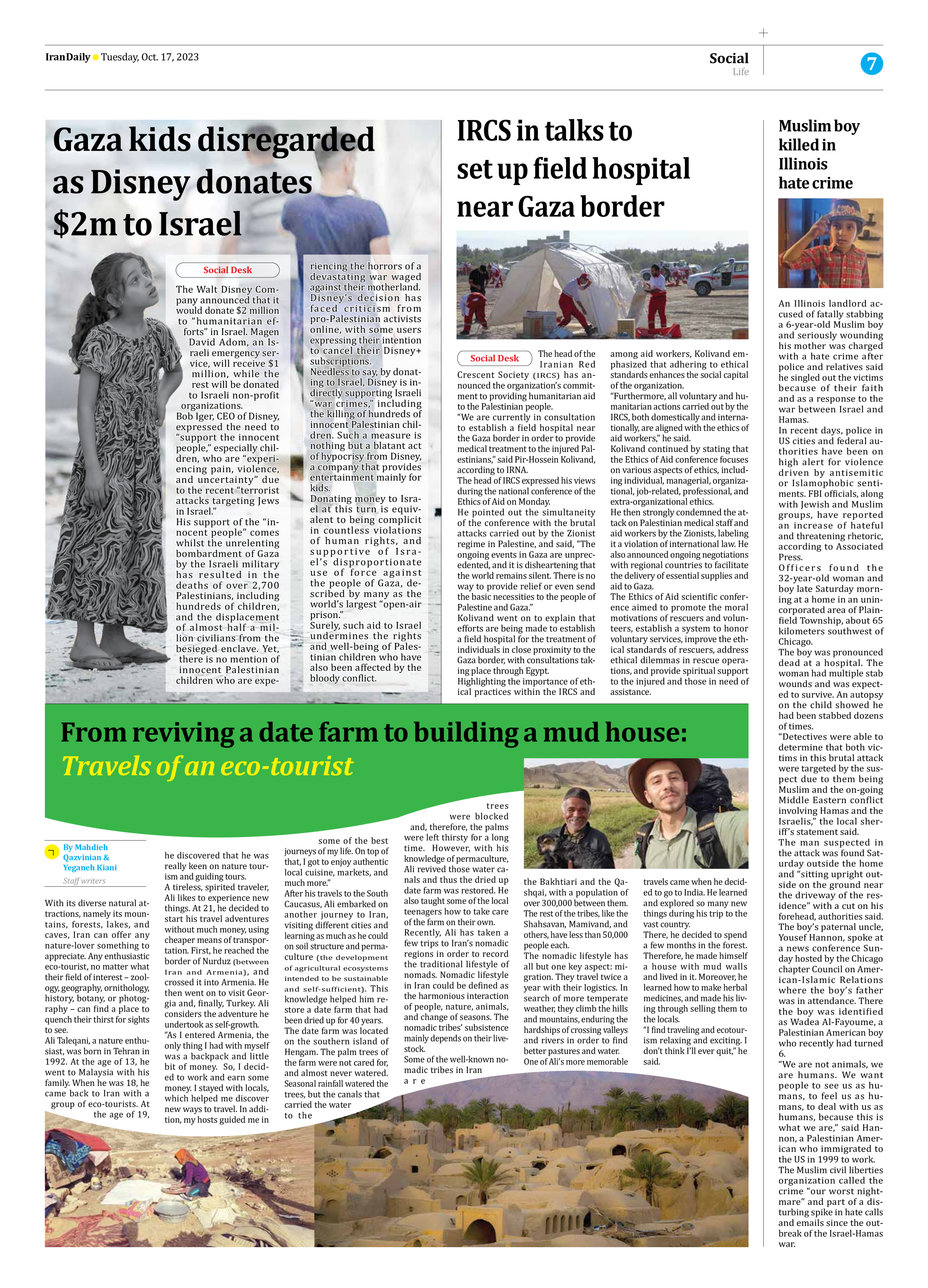
From reviving a date farm to building a mud house: Travels of an eco-tourist
By Mahdieh Qazvinian &Yeganeh Kiani
Staff writers
With its diverse natural attractions, namely its mountains, forests, lakes, and caves, Iran can offer any nature-lover something to appreciate. Any enthusiastic eco-tourist, no matter what their field of interest – zoology, geography, ornithology, history, botany, or photography – can find a place to quench their thirst for sights to see.
Ali Taleqani, a nature enthusiast, was born in Tehran in 1992. At the age of 13, he went to Malaysia with his family. When he was 18, he came back to Iran with a group of eco-tourists. At the age of 19, he discovered that he was really keen on nature tourism and guiding tours.
A tireless, spirited traveler, Ali likes to experience new things. At 21, he decided to start his travel adventures without much money, using cheaper means of transportation. First, he reached the border of Nurduz (between Iran and Armenia), and crossed it into Armenia. He then went on to visit Georgia and, finally, Turkey. Ali considers the adventure he undertook as self-growth.
“As I entered Armenia, the only thing I had with myself was a backpack and little bit of money. So, I decided to work and earn some money. I stayed with locals, which helped me discover new ways to travel. In addition, my hosts guided me in some of the best journeys of my life. On top of that, I got to enjoy authentic local cuisine, markets, and much more.”
After his travels to the South Caucasus, Ali embarked on another journey to Iran, visiting different cities and learning as much as he could on soil structure and permaculture (the development of agricultural ecosystems intended to be sustainable and self-sufficient). This knowledge helped him restore a date farm that had been dried up for 40 years.
The date farm was located on the southern island of Hengam. The palm trees of the farm were not cared for, and almost never watered. Seasonal rainfall watered the trees, but the canals that carried the water to the trees were blocked and, therefore, the palms were left thirsty for a long time. However, with his knowledge of permaculture, Ali revived those water canals and thus the dried up date farm was restored. He also taught some of the local teenagers how to take care of the farm on their own.
Recently, Ali has taken a few trips to Iran’s nomadic regions in order to record the traditional lifestyle of nomads. Nomadic lifestyle in Iran could be defined as the harmonious interaction of people, nature, animals, and change of seasons. The nomadic tribes’ subsistence mainly depends on their livestock.
Some of the well-known nomadic tribes in Iran are the Bakhtiari and the Qashqai, with a population of over 300,000 between them. The rest of the tribes, like the Shahsavan, Mamivand, and others, have less than 50,000 people each.
The nomadic lifestyle has all but one key aspect: migration. They travel twice a year with their logistics. In search of more temperate weather, they climb the hills and mountains, enduring the hardships of crossing valleys and rivers in order to find better pastures and water.
One of Ali’s more memorable travels came when he decided to go to India. He learned and explored so many new things during his trip to the vast country.
There, he decided to spend a few months in the forest. Therefore, he made himself a house with mud walls and lived in it. Moreover, he learned how to make herbal medicines, and made his living through selling them to the locals.
“I find traveling and ecotourism relaxing and exciting. I don’t think I’ll ever quit,” he said.







